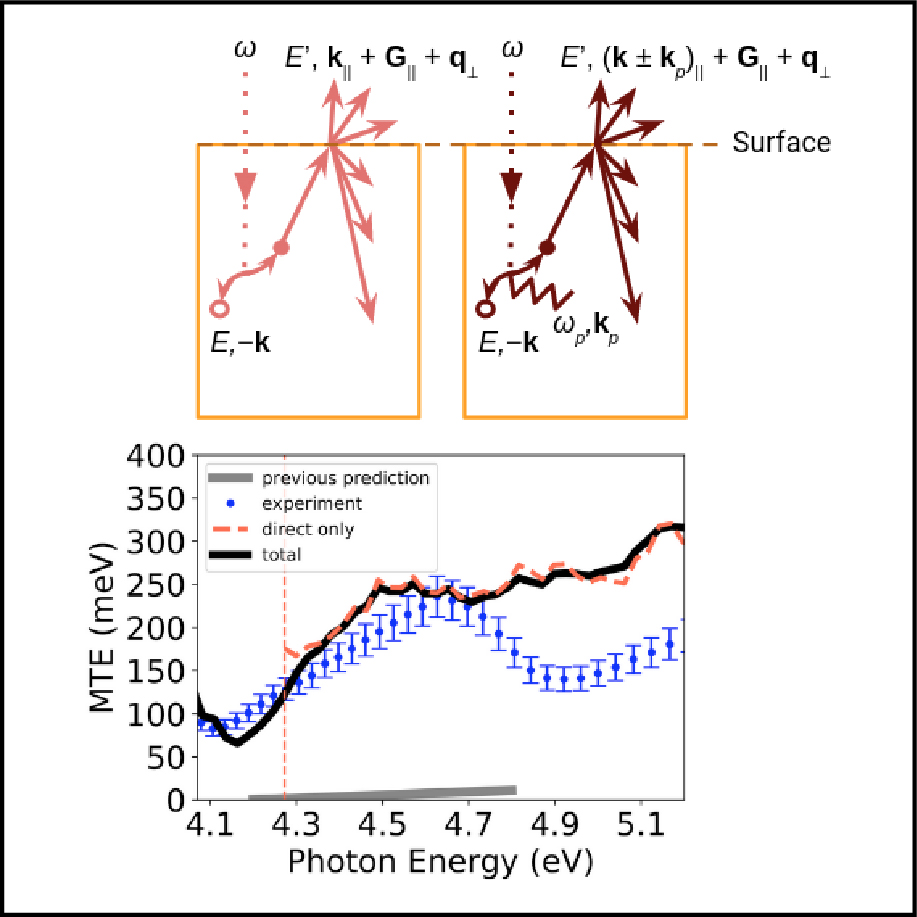Theory of Transverse Energy Distribution of Photoelectrons
Ab Initio Many-body Photoemission Theory of Transverse Energy Distribution of Photoelectrons: PbTe(111) as a Case Study with Experimental Comparisons
Previous works predict that the (111) surface of PbTe is capable of producing high-brightness photoelectron beam with very low mean transverse energy (MTE) ≤ 15 meV. However, our experiments yield photoelectron beams with MTE values that are up to twenty times higher. Our experiments also show lower photoemission threshold than predicted. To explain these mysteries, we develop a new ab Initio many-body photoemission theory to calculate the MTE of photoemitted electrons. Using this theory, our calculations reproduce both the magnitude of the MTE from our measurements on PbTe(111) and the observed photoemission below the predicted threshold. Our results show that excited bulk electronic states and coherent electron-photon-phonon scattering, both of which the previous works ignore, play significant roles in photoemission from PbTe(111).
Reference:
J. K. Nangoi, S. Karkare, R. Sundararaman, H. A. Padmore, and T. A. Arias, “Importance of bulk excitations and coherent electron-photon-phonon scattering in photoemission from PbTe(111): Ab initio theory with experimental comparisons,” Physical Review B, vol. 104, no. 115132, Sep. 2021, doi: 10.1103/physrevb.104.115132. [Online]. Available: https://arxiv.org/abs/2006.11924

